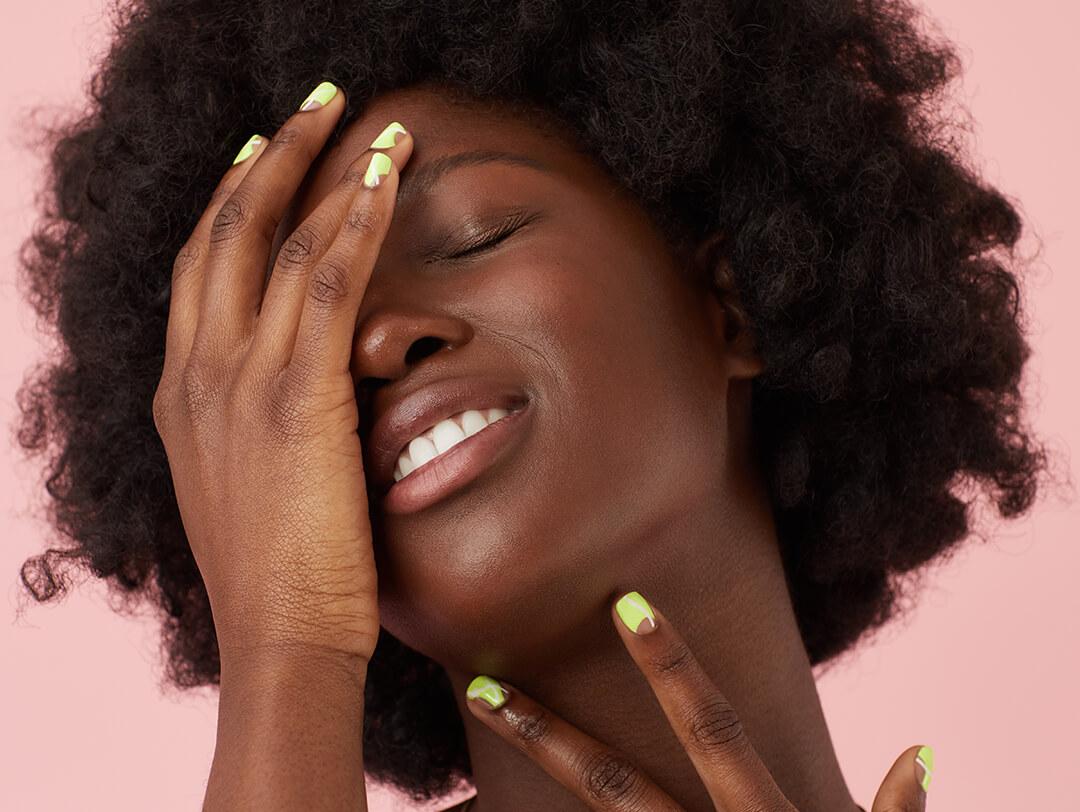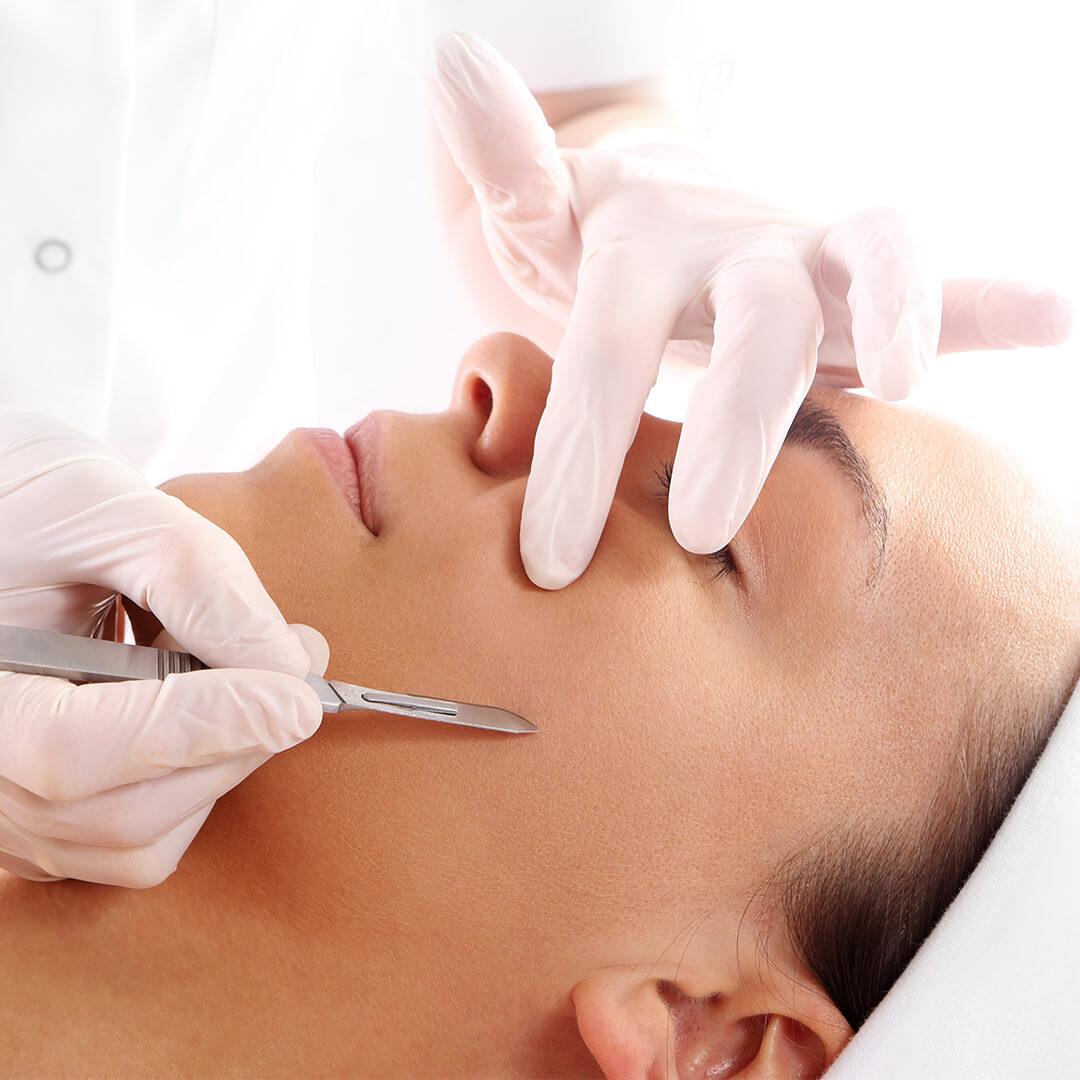Everything You've Ever Wanted to Know About Dermaplaning



Hannah Cassidy


After any winter (and especially after last winter) we still have major baggage—aka dead, dull skin that isn’t going to magically snap into its most glowy state. But what if we told you that there’s a shortcut that doesn’t require a very diligent six-to-eight week skincare routine? Yep—dermaplaning has long been a celeb secret for getting red carpet-ready skin in a flash. Despite the idea of taking a surgical razor to exfoliate skin, the procedure is totally painless, quick, and leaves behind super-soft, glowy skin.
While it sounds a lot like shaving your face (trust us, it’s not), there is so, so much more to know about the dermaplane process—at-home risks, how it works, and what to expect from the pros who perform it. Read on for the full scoop.


It's about glam time you treated yourself.
MEET THE EXPERT
Vanessa Lee is a world-renowned cosmetic nurse, skincare expert, and founder of The Things We Do—a beauty concept bar and med spa in Los Angeles. With a long list of celeb clientele (like Jessica Alba, Gabrielle Union, and Kourtney Kardashian), she guides her facial balancing and skincare techniques with natural intention.
So, What Is Dermaplaning?
In its essence, dermaplaning is a cosmetic procedure that uses a straight-edge razor to remove dead skin, pore-clogging debris, and facial hair (you know, the peach fuzz) from the surface of your skin. But it also provides long-term benefits that typically accompany exfoliation—like anti-aging, decongestion, and a better absorption of skincare. “Most types of exfoliation, including dermaplaning, encourage cell turnover rate, leading to brighter, smoother, and more even skin tone. This is also a great option for deeper exfoliation if one is too sensitive for chemical peels or rougher microdermabrasion,” says Vanessa Lee, cosmetic nurse, skincare specialist, and founder of The Things We Do in Los Angeles.
Although dermaplaning sounds like a very fancy procedure, it isn’t quite as complicated as the name would have you believe. However, despite being relatively simple, it’s a procedure you’re going to want to see a professional for.
What to Expect During a Dermaplaning Treatment


One major bonus to dermaplaning is that there’s virtually no downtime associated with the procedure, so you can squeeze it in on your lunch break. “It is a painless, non-invasive process that takes no more than 30 minutes and does not require any social downtime,” Lee reassures. If you’re ready to try it out, be sure to book an appointment with a trained dermatologist or esthetician to achieve the best results.
“After being completely cleansed, your provider will use a rounded edge surgical blade that is gently run over the surface of the skin to remove fine hairs, dead skin cells, and other debris sitting on the skin surface,” says Lee. The entire process takes approximately 20-30 minutes, making it a quick and painless option for hair removal and exfoliation. You may experience slight redness for an hour or two afterwards, but that will quickly subside. “The dead skin layers removed also acted as a type of protective barrier, so make sure that you protect your newly hairless, dewy skin,” adds Lee. With the risk of increased sensitivity to sunlight post-exfoliation, don’t forget to top off with a good SPF afterwards.
How Much Does Dermaplaning Cost?
Compared to other in-office skincare treatments, dermaplaning is a relatively low-cost option. They can range anywhere between $85 to $200, depending where you live. The feeling of smooth, baby-like skin? Priceless.
What Are The Benefits Of Dermaplaning?
Like any exfoliation treatment, there are short term and long term benefits. Now that your skin is free of its usual gatekeepers (like dead skin cells), it’ll be ready to drink in all of your skincare. “Because the skin has had a physical exfoliation of having the outer layers of dead skin essentially shaved off, the skincare applied afterwards has an easier time penetrating the skin and doing it’s job,” says Lee.
And be prepared for the smoothest makeup application of your life. With no peach fuzz or flakiness to harsh your vibe, your foundations and concealers will finally have that skin-like finish they’ve been touting. Which BTW, let this be proof that the reason celebs appear to have an *award show glow* is because they have access to these kinds of treatments on the reg.
While we love an instant gratification moment, a good chunk of the benefits come into play later down the road. Your skin has a natural cell turnover rate, but exfoliation can help put it on the fast track, allowing your skin to shed cells quicker and replace them with new ones. Without all of that buildup sitting on the surface, it can help keep acne, hyperpigmentation, milia, and uneven texture at bay.
Who Is Dermaplaning Best For?
Dermaplaning is a relatively low-risk procedure that works wonders for a variety of skin types–but it certainly isn’t for everyone. “For people who break out very easily and have considerably sensitive skin, it’s best to protect the skin barrier and work on controlling inflammation instead of physical exfoliation,” advises Lee. As long as you don’t suffer from super-sensitive skin or are currently experiencing rosacea or an acne flare-up, then consider yourself golden.
Are There Any Side Effects?
Post-procedure, you can expect to see some redness, but that will subside. “Sometimes the skin can feel slightly tight or dry after dermaplaning, but with a hydrating product, this will not be an issue,” says Joie Tavernise, founder & owner of JTAV Clinical Skincare in New York City. “Most importantly–the hair will not grow back thicker or darker. This is a myth that I have to say is completely false!”
Infection and scarring are very rare but in order to avoid these side effects, make sure you seek out a skilled practitioner. “It is important that you see an experienced professional for this treatment, to ensure that they are using a sterile blade and are experienced in the technique,” says Tavernise.
Can You Dermaplane at Home?
As you can tell by now, dermaplaning is performed by experts for a good reason—it requires a honed technique, the right tools, and appropriate prep and aftercare. At-home aficionados online tend to recommend straight-edge razors, but it will not yield the same results as you would if performed by a skilled aesthetician. “There is a vast difference of smoothness and blade quality in medical grade surgical blades versus razors bought online,” explains Lee. Plus, Lee adds that there are risks involved. “If you are not used to dermaplaning yourself there is a higher risk of cutting yourself, which can lead to scarring.”
Survey says? Stick to the pros for dermaplaning.
Obviously, we know that sometimes curiosity (and great marketing) gets the best of us. So if you’re dead-set on trying to dermaplane yourself, opt for tools that are designed to be safer for home use—like the DERMAFLASH Anti-Aging Dermaplaning Exfoliation Device.
Want in on all the IPSY Glam Bag fun? Take our Beauty Quiz now to get started. Already an Ipster? Refer your friends to earn points, which you can use toward products. Either way, don’t forget to check us out on Instagram and Twitter @IPSY.
Like this article? Share it with your friends by clicking the icons below!
Liked this post? Share!
Related Stories


Skin
How to Adjust Your Skincare Routine for Mature Skin in the Winter
Published on Dec 4, 2025 • 7 min read


Skin
Meet the Best Moisturizers for Winter, According to Dermatologists
Published on Dec 1, 2025 • 9 min read


Skin
What Is Inflammaging—and Why Everyone’s Talking About It
Published on Dec 1, 2025 • 8 min read


Skin
6 Skincare Trends to Have on Your Radar in 2026, According to Experts
Published on Dec 1, 2025 • 7 min read


Skin
We Grabbed Our Crystal Ball and Found These 6 Skincare Predictions for 2025
Published on Dec 10, 2024 • 7 min read


Skin
Simple Self-Care Tips That Actually Make a Difference
Published on Nov 13, 2025 • 12 min read


Skin
These 9 Face Scrubs Will Unlock Soft and Smooth Skin on Contact
Published on Nov 5, 2025 • 10 min read


Skin
10 Thanksgiving Foods That Will Have Your Skin Coming Back for Seconds
Published on Oct 15, 2025 • 7 min read


Beauty Picked Just for You
Get 5 products worth up to $70
Plus exclusive access to epic deals up to 80% off
Starting at just $14/month. Cancel anytime.